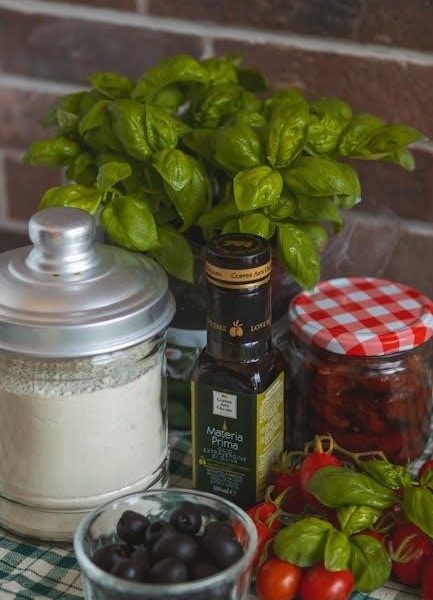
mason jar collectors guide
Mason jar collecting offers a captivating journey through history and nostalgia․ With factors like rarity and craftsmanship influencing value, it’s a hobby that appeals to both seasoned collectors and newcomers alike․
What Are Mason Jars?
Mason jars are iconic glass containers originally designed for canning and food preservation․ Invented in the 19th century, they feature a screw-on lid and rubber seal, creating an airtight environment to prevent spoilage․ These jars are typically made of thick, durable glass and often feature embossed logos or markings from their manufacturers, such as Ball, Kerr, or Atlas․ Over time, Mason jars have evolved in design, size, and color, making them highly collectible․ Their versatility extends beyond food storage; they are now popular for home decor, crafting, and even as a symbol of rustic charm․ The jars’ timeless appeal lies in their practicality, historical significance, and aesthetic beauty, making them a cherished item for both functional use and nostalgic display․
Today, Mason jars remain a staple in kitchens and collections worldwide, blending tradition with modern creativity․
Why Collect Mason Jars?
Mason jars have captivated collectors due to their rich history, versatility, and nostalgic charm․ For many, collecting these jars is a way to connect with the past, appreciating their role in food preservation and household traditions․ The variety in designs, colors, and manufacturers offers endless opportunities for discovery, making each jar a unique treasure․ Collectors also value the jars’ durability and craftsmanship, which reflect the ingenuity of earlier eras․ Additionally, certain rare or vintage jars can appreciate in value, turning a hobby into a potential investment․ Beyond their practical origins, Mason jars have become symbols of rustic elegance and simplicity, inspiring creative uses in home decor and crafting․ Whether driven by historical interest, aesthetic appeal, or the thrill of the hunt, Mason jar collecting offers a rewarding and engaging pastime for enthusiasts of all levels․
Their timeless appeal continues to attract new collectors, ensuring their legacy endures for generations․
A Brief History of Mason Jars
Mason jars have a storied past that dates back to the mid-19th century․ Invented by John Landis Mason in 1858, these jars revolutionized food preservation with their innovative screw-on lid and rubber ring design․ The patent for this groundbreaking sealing technique made Mason jars indispensable for home canning and food storage․ Over the years, the jars evolved, with improvements in glassmaking and lid designs․ By the early 20th century, companies like Ball and Kerr began mass-producing Mason jars, further popularizing their use․ Their durability and versatility made them a staple in kitchens across America, playing a crucial role in household food preservation․ Beyond their practical use, Mason jars also hold cultural significance, symbolizing self-sufficiency and a connection to simpler times․
Today, vintage Mason jars are highly sought after by collectors, offering a glimpse into the past and the evolution of domestic life․
History of Mason Jars
Mason jars, invented by John Landis Mason in 1858, revolutionized food preservation with their innovative sealing mechanism․ Their enduring popularity stems from their practicality and timeless appeal․
The Invention and Early Years
The invention of Mason jars is attributed to John Landis Mason, who patented the first screw-on glass lid and rubber ring sealing mechanism in 1858․ This revolutionary design made food preservation more accessible and efficient, quickly gaining popularity among households․ Early Mason jars were made of thick, heavy glass and featured distinctive markings, such as the patent date, which helps collectors identify their age․ The jars were initially produced by various manufacturers, including the New York-based company that later became the Mason Jar Company․ These early jars were not only functional but also showcased craftsmanship, with unique embossing and colors that added to their charm․ The invention of Mason jars marked the beginning of a new era in home canning and food storage, laying the foundation for their enduring legacy as both practical tools and cherished collectibles․
Evolution of Mason Jars Over Time
Mason jars underwent significant transformations over the decades, adapting to technological advancements and changing consumer needs․ In the late 19th and early 20th centuries, manufacturers like Ball and Kerr began mass-producing Mason jars, introducing machine-made glass that was thinner and more uniform․ This shift from hand-blown to machine-made production made jars more affordable and widely available․ The jars also evolved in design, with improvements such as smoother rims, standardized sizes, and a variety of colors, including cobalt blue and green․ Embossing on the glass became more intricate, featuring logos and patent dates that now help collectors identify their origins․ By the mid-20th century, Mason jars had become iconic symbols of home canning and rural life․ Today, they are not only functional but also highly sought after by collectors for their historical significance and aesthetic appeal․
Cultural Significance and Historical Impact
Mason jars hold a special place in cultural history, symbolizing self-sufficiency and resourcefulness․ They played a crucial role in home canning during the late 19th and early 20th centuries, enabling families to preserve food and sustain themselves through challenging times․ Their widespread use during the Great Depression and World War II further cemented their importance in American households․ Beyond functionality, Mason jars evoke nostalgia, representing a simpler, more rustic way of life․ Today, they are celebrated not only for their historical value but also for their versatility in modern decor and crafting․ The jars have transcended their original purpose, becoming iconic symbols of sustainability and DIY culture․ Their enduring appeal lies in their ability to connect people to the past while remaining relevant in contemporary lifestyles, making them a cherished item for both collectors and enthusiasts․
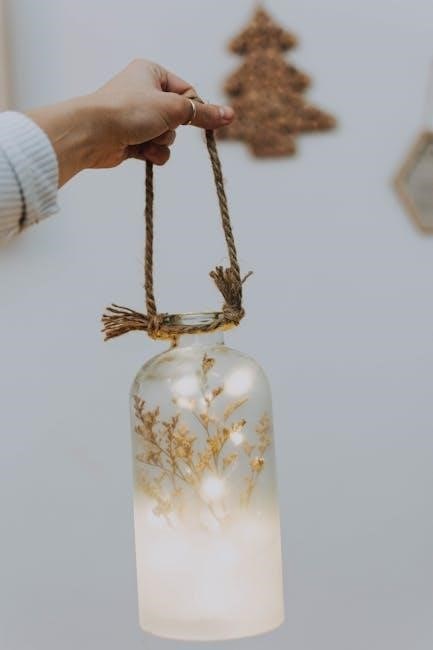
Identifying Antique Mason Jars
Identifying antique Mason jars involves examining age, rarity, embossing, and color․ Resources like “The Red Book” and online guides help determine authenticity and value, aiding collectors in their pursuit․
Key Characteristics of Antique Mason Jars
Antique Mason jars are distinguished by unique characteristics such as embossing, glass color, and logos; Look for marks like “Mason” or specific manufacturer logos, which indicate authenticity․ The glass often features a distinctive “screw-top” mouth and may display patina or imperfections from age․ Colors like amber, aqua, or clear are common, with rarer hues increasing value․ The presence of original lids or rims can also enhance desirability․ Early jars may lack standardized sizing, while later ones often have more uniform shapes․ Collectors should inspect for signs of wear, such as chips or cracks, which can affect value․ Embossing on the base or sides provides clues about the jar’s age and origin․ These traits, combined with historical research, help collectors identify and appraise their finds, making each jar a unique piece of history․
How to Date a Mason Jar
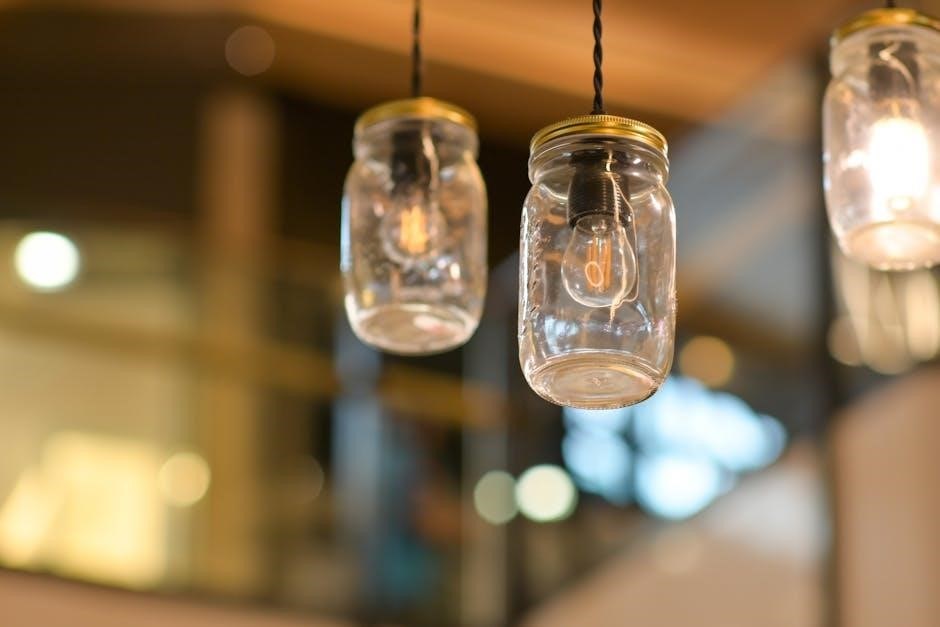
Dating a Mason jar involves examining its features, logos, and historical context․ Early jars often bear the “Mason” patent date of 1858, while later ones may show logos from manufacturers like Ball or Kerr․ The style of the logo and the presence of a patent number can help narrow down the era․ Glass color and texture also provide clues, as certain hues were popular during specific periods․ For instance, aqua glass was common in the early 20th century, while amber became popular later․ Collectors can consult resources like the Red Book or online price guides to match their jar’s characteristics with known production timelines․ Additionally, inspecting for mold seams and the shape of the mouth can indicate whether the jar was made in the 19th or 20th century․ By combining these methods, enthusiasts can accurately determine the age of their Mason jars and appreciate their historical significance․
Differentiating Reproductions from Authentic Jars
Determining whether a Mason jar is authentic or a reproduction requires careful examination․ Authentic jars often feature distinct mold seams, which are more pronounced in older pieces․ Reproductions may lack these seams or have smoother, less defined ones․ The logo and markings are also critical; genuine jars typically have crisp, well-defined embossing, while reproductions may appear blurry or uneven․ Glass color and texture can also help—vintage jars often have a richer, more muted tone, while newer ones may look brighter or more uniform․ Additionally, authentic jars may show signs of aging, such as tiny bubbles or imperfections in the glass․ Consulting price guides, like the Red Book, and seeking expert opinions can further aid in authentication․ By carefully analyzing these details, collectors can distinguish genuine antique Mason jars from modern reproductions․
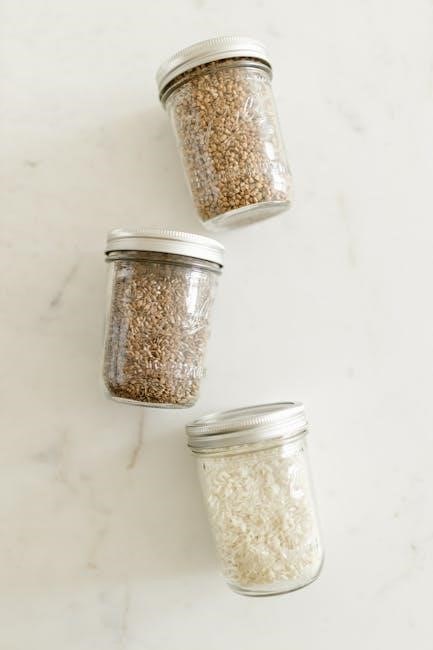
Valuation of Mason Jars
Mason jar valuation depends on factors like age, rarity, and unique features such as embossing or color․ Resources like the Red Book provide detailed pricing and identification guidance for collectors․
Factors Affecting the Value of Mason Jars
The value of Mason jars is influenced by several key factors, including age, rarity, and unique features such as embossing or color․ Jars produced in limited quantities or during specific time periods, like the early 20th century, tend to be more valuable․ Color plays a significant role, with rarer hues such as cobalt blue or amber commanding higher prices․ Embossing, which indicates the manufacturer and production year, can also enhance value․ Condition is another critical factor; jars in pristine condition with minimal wear are more sought after․ Additionally, historical significance and cultural appeal, such as jars tied to specific events or traditions, can increase their worth․ Collectors often rely on resources like the Red Book and eBay sold listings to determine fair market value․ Understanding these factors helps collectors and sellers accurately assess and negotiate the value of their Mason jars․
Rare and Most Valuable Mason Jars
Rare Mason jars are highly sought after by collectors due to their unique characteristics and historical significance․ One of the most valuable is the “No․ 13 Moonshiner’s Jar,” known for its association with Prohibition-era moonshine production․ Jars with distinctive colors, such as cobalt blue or amber, are also highly prized, as these hues were produced in limited quantities․ The “Atlas jars” with embossed logos and early “Ball jars” from the 1900s are particularly rare and valuable․ Condition plays a crucial role, with jars in near-mint condition commanding premium prices․ Additionally, jars tied to specific historical events or manufacturers can fetch high amounts․ Collectors often reference guides like the Red Book to identify and appraise these rare finds․ For enthusiasts, discovering a rare Mason jar can be a thrilling experience, offering a tangible connection to the past and a potential treasure for their collection․

Using Price Guides and Expert Resources
Price guides and expert resources are essential tools for Mason jar collectors to determine the value and authenticity of their finds․ The Red Book, a comprehensive guide to fruit jars, provides detailed descriptions, historical context, and estimated values, making it a must-have for serious collectors․ Online platforms like eBay and specialized forums offer insights into current market trends and sold listings, helping collectors gauge demand and pricing․ Additionally, consulting with experts or joining collector communities can provide valuable appraisals and advice․ Many enthusiasts also rely on books and brochures, such as those offering tips on dating and identifying jars․ These resources not only aid in building a collection but also enhance the overall understanding and appreciation of Mason jars․ By leveraging these tools, collectors can make informed decisions and uncover rare or undervalued pieces to elevate their collections․
Building a Mason Jar Collection
Starting a Mason jar collection is an exciting hobby․ Begin by researching and acquiring jars from antique shops, flea markets, or online platforms․ Use price guides and expert resources to identify rare finds and build a meaningful collection․
Starting Your Collection
Starting a Mason jar collection is an exciting venture that combines history, nostalgia, and personal curiosity․ Begin by defining your goals: are you interested in specific brands, rare colors, or historical significance? Research is key—use resources like The Red Book or online price guides to understand the market․ Visit antique shops, flea markets, and estate sales to find unique pieces․ Online platforms like eBay and Etsy can also be treasure troves․ Consider joining collector communities for tips and advice․ Start small, focusing on jars that resonate with you personally․ Patience is important, as building a meaningful collection takes time․ Remember, the journey is as rewarding as the jars themselves, offering a glimpse into the past and the craftsmanship of earlier eras․
Where to Find Mason Jars
Discovering Mason jars can be an adventurous and rewarding experience․ Antique shops, flea markets, and estate sales are excellent places to uncover rare and vintage jars․ Online platforms like eBay and Etsy offer a wide selection, with options to filter by rarity, condition, and price․ Thrift stores and garage sales can also yield hidden gems․ For a more personalized approach, consider visiting local auctions or specialty vintage shops․ Additionally, collector communities and forums often share tips on where to find unique jars․ Don’t overlook the possibility of inheriting jars from family members or friends, as these can hold sentimental value․ When searching online, use specific keywords like “antique Mason jars” or “vintage Ball jars” to narrow your search․ Remember, patience and persistence are key to finding the perfect additions to your collection․

Strategies for Expanding Your Collection
Expanding your Mason jar collection requires a combination of research, networking, and strategic hunting․ Start by setting clear goals, such as focusing on specific brands, colors, or rarity levels․ Networking with fellow collectors through clubs, online forums, and social media groups can provide valuable leads and tips․ Attend antique shows, auctions, and flea markets, as these are hotspots for rare finds․ Utilize online marketplaces like eBay and Etsy, but be cautious of reproductions by verifying seller credibility․ Additionally, consult price guides like The Red Book to understand market values and identify gaps in your collection․ Don’t hesitate to negotiate prices at in-person sales, and consider trading jars with other collectors․ Finally, stay patient and persistent—rare jars often surface unexpectedly․ By combining these strategies, you can systematically grow your collection while enjoying the thrill of the hunt․
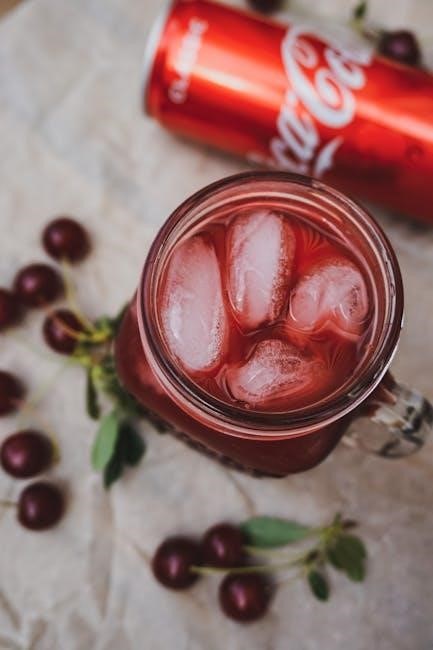
Care and Maintenance
Proper care involves gentle cleaning with mild soap, avoiding abrasive materials, and storing jars in a cool, dry place․ Use sturdy shelves or display cases to protect your collection․
Cleaning and Restoring Mason Jars
Cleaning and restoring Mason jars requires careful attention to preserve their condition and historical value․ Start by gently washing the jars with mild soap and warm water, using a soft sponge or brush to remove dirt and grime․ Avoid harsh chemicals or abrasive materials that could damage the glass or embossing․ For stubborn stains or residue, soak the jar in warm, soapy water for several hours before scrubbing․ Metal lids and bands can be cleaned with a mixture of vinegar and water to remove rust or corrosion․ Dry the jars thoroughly to prevent water spots․ For restoration, consider polishing the glass with a gentle glass cleaner or using a professional service for rare or delicate jars․ Proper cleaning and restoration not only enhance the jar’s appearance but also maintain its integrity for future generations of collectors․
Proper Storage and Display
Proper storage and display are essential for maintaining the condition and value of your Mason jar collection․ Store jars in a cool, dry place away from direct sunlight to prevent fading or damage․ Use acid-free materials like tissue paper or cloth to line shelves or boxes․ For display, consider glass-front cabinets or open shelves to showcase your jars while protecting them from dust․ Avoid stacking jars to prevent chipping or breakage․ If displaying lids, ensure they are securely attached or stored separately in a labeled container․ For rare or fragile jars, use museum-quality stands or risers to enhance visibility and stability․ Regularly inspect stored jars for signs of moisture or pests․ Proper storage and display not only preserve your collection but also allow you to enjoy the aesthetic and historical charm of your Mason jars for years to come․
Preserving the Condition of Your Jars
Preserving the condition of your Mason jars is crucial for maintaining their value and integrity․ Avoid using harsh chemicals or abrasive materials, as they can damage the glass or embossing․ Instead, clean jars gently with mild soap and soft cloths․ For stubborn residue, soak jars in warm water before cleaning․ Handle jars with care to prevent chipping or cracking, especially around the rims and handles․ Store jars in a stable environment, away from extreme humidity or temperature fluctuations, which can cause warping or mineral deposits․ Avoid exposing jars to direct sunlight, as it may fade embossing or discolor the glass․ For jars with lids, clean and store them separately to prevent rust or corrosion․ Regularly inspect your jars for signs of damage or wear․ By taking these steps, you can ensure your Mason jar collection remains in excellent condition for years to come․
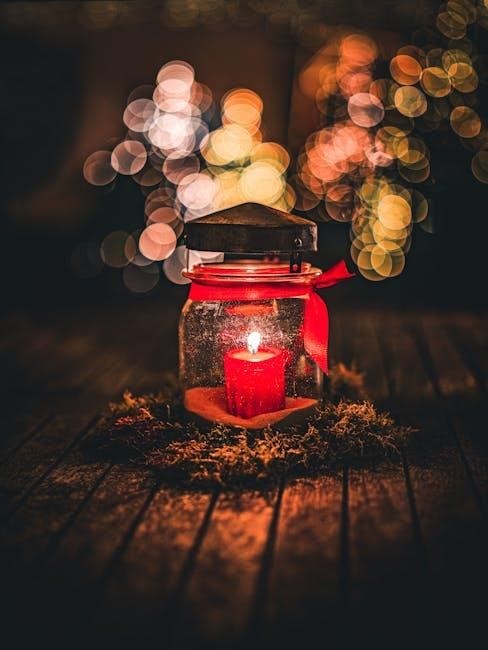
Mason Jar Collecting Community
The Mason jar collecting community is vibrant and supportive, offering countless opportunities to connect with fellow enthusiasts through clubs, events, and online forums, fostering knowledge sharing and collection growth․
Clubs and Events for Collectors
Joining clubs and attending events is a great way for Mason jar collectors to connect, share knowledge, and showcase their collections․ Many local and national clubs host meetups, auctions, and workshops, offering hands-on learning opportunities․ Online forums and social media groups also provide platforms for collectors to exchange tips and discover rare finds․ Annual antique shows and collector conventions often feature Mason jar exhibits, allowing enthusiasts to admire and purchase unique pieces․ These events foster camaraderie and help collectors expand their expertise․ Whether you’re a seasoned collector or just starting out, engaging with the community can enhance your passion for Mason jars and open doors to new discoveries․ Participating in these activities not only enriches your collecting journey but also helps preserve the history and legacy of these iconic jars․
Online Communities and Forums
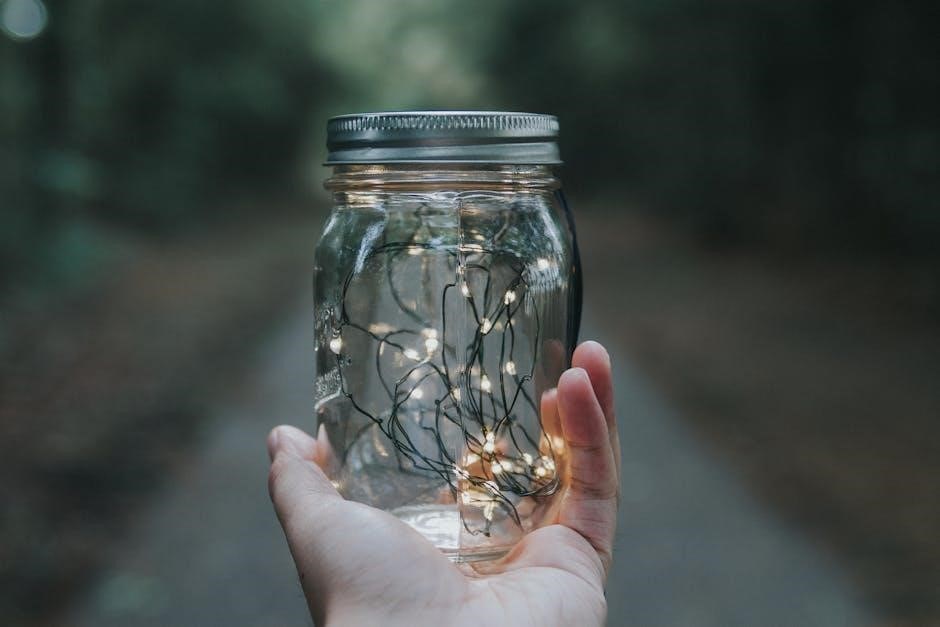
Online communities and forums have become vital hubs for Mason jar collectors to connect, share knowledge, and showcase their finds․ Platforms like Instagram, Facebook groups, and specialized forums are filled with enthusiasts eager to discuss their passion․ These spaces offer valuable resources, such as price guides, identification tips, and historical insights․ Collectors can post photos of their jars to receive feedback or learn about rare finds․ Many forums also feature discussions on restoration techniques and care tips․ Social media groups often announce upcoming events or auctions, helping collectors stay updated․ Online communities provide a global network for sharing experiences and expanding knowledge․ Whether you’re seeking advice or just want to admire others’ collections, these digital spaces are indispensable for Mason jar enthusiasts․ They foster a sense of belonging and help collectors grow their expertise from the comfort of their homes․
Networking with Fellow Collectors
Networking with fellow Mason jar collectors is a key aspect of building and enhancing your collection․ Joining clubs, attending events, and participating in online forums can connect you with like-minded enthusiasts․ These interactions provide opportunities to learn from experienced collectors, gain insights into rare finds, and share your own knowledge․ Many collectors find value in collaborating on research or trading jars to complete sets․ Social media platforms like Instagram and Facebook host active communities where members post photos, ask questions, and celebrate their discoveries․ Additionally, local antique shows and collector meetups offer chances to meet experts and learn about new trends․ By fostering these connections, you can expand your understanding of Mason jar history, identification, and valuation․ Networking not only enriches your collecting journey but also helps you stay updated on the latest developments in the hobby․
Mason jar collecting is a rewarding journey through history and nostalgia․ With the right resources and connections, enthusiasts can continue exploring and cherishing these timeless treasures for years to come․
Final Thoughts on Mason Jar Collecting
Mason jar collecting is a hobby that combines history, nostalgia, and personal passion․ Whether you’re drawn to their timeless design, historical significance, or the thrill of the hunt, these jars offer endless fascination․ The value of Mason jars often lies in their rarity, condition, and unique features, making each find a potential treasure․ For collectors, the journey is as rewarding as the destination, with opportunities to connect with like-minded enthusiasts and learn from experts․ As you explore this hobby, remember to embrace the stories behind each jar and the craftsmanship that shaped them․ With resources like price guides, online communities, and expert advice, you’ll be well-equipped to grow your collection and appreciate these iconic pieces․ Mason jar collecting is more than a pastime—it’s a way to preserve history and celebrate the beauty of everyday objects․
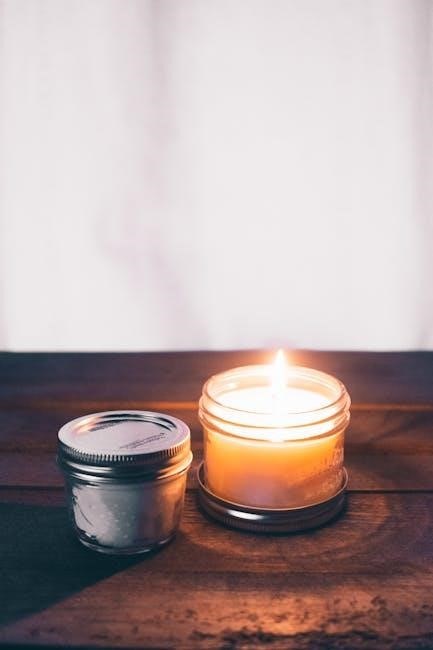
Encouragement for Further Exploration
Embarking on the journey of Mason jar collecting is a rewarding adventure that invites you to explore history, craftsmanship, and community․ With countless resources available, from detailed price guides like The Red Book to online forums and collector communities, you have ample opportunities to deepen your knowledge․ Attend antique shows, join collector clubs, and engage with fellow enthusiasts to expand your understanding and collection․ The thrill of the hunt, whether at flea markets or estate sales, adds excitement to the process․ As you discover rare and unique jars, you’ll appreciate the stories they hold and the legacy they represent․ Don’t hesitate to reach out to experts or seek advice from seasoned collectors—their insights can guide you in making informed decisions․ Whether you’re aiming to build a vast collection or simply cherish a few cherished pieces, the world of Mason jars offers endless opportunities for exploration and enjoyment․ Start your journey today and uncover the treasures waiting for you!
Related posts:
Archives
Calendar
| M | T | W | T | F | S | S |
|---|---|---|---|---|---|---|
| 1 | 2 | 3 | 4 | 5 | 6 | 7 |
| 8 | 9 | 10 | 11 | 12 | 13 | 14 |
| 15 | 16 | 17 | 18 | 19 | 20 | 21 |
| 22 | 23 | 24 | 25 | 26 | 27 | 28 |
| 29 | 30 | 31 | ||||
Leave a Reply
You must be logged in to post a comment.